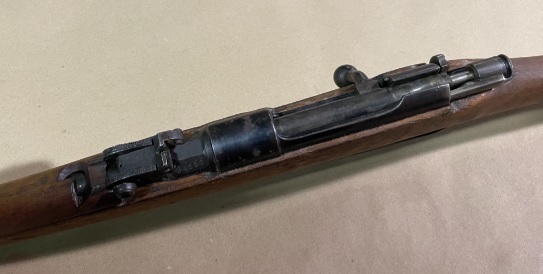17 Things You Didn’t Know About Carcano Rifles
Jul 27th 2023
- Carcano rifles were in official service for more than 100 years. The first Carcano, the Model 1891 (AKA M91 Carcano) was developed by Salvatore Carcano at the Torino Army Arsenal. It was in service until 1981 in Italy, and variants remain in service elsewhere.
- The first Carcano cartridge, 6.5x52mm Carcano, was originally loaded with a round-nosed bullet. The original cartridge is also known in English as the 6.5 Italian (although this name is hardly specific) and the round-noised bullet originally loaded into the cartridge was notorious for tumbling and deflection on contact with a target.
- Carcano rifles and variants have been produced in more than 5 different chamberings. These include the original 6.5 Carcano cartridge as well as the 7.35x51mm Carcano, 6.5x54mm Mannlicher-Schönauer, 7.92x57mm Mauser, and 6.5x50mm Arisaka cartridges.
- The original 6.5 Carcano cartridge had several distinct advantages over larger, heavier cartridges like the .303 British and 7.92 Mauser. While it was not as powerful, it was smaller and lighter, making it less industrially taxing to produce and enabling a solder to carry more rounds of ammunition in a smaller space, at less weight. This cartridge was also flatter shooting than many of its larger contemporaries.
- Carcano rifles have been used in more than 15 significant global conflicts while in official service. Carcanos saw service in the First and Second World Wars, as well as in the First Italo-Ethiopian War, Boxer Rebellion, Spanish Civil War, and Winter War.
- Sporterized Carcano rifles in appropriate chamberings (and loaded with appropriate bullets) are suitable for taking medium-sized game in North America. Though probably not common, a Carcano chambered in the original 6.5x52mm cartridge is more than capable of taking game such as white-tailed deer. Loading with a spitzer bullet improves accuracy and ballistic performance. Other variants, such as those loaded in 7.92x57mm Mauser are also suitable as sporting rifles.
- Italy produced Carcano rifles for the Empire of Japan prior to the Second World War. The Imperial Japanese Navy contracted with Italy for this purpose.
- After World War II, the Italian government replaced its Carcano rifles with a combination of British Lee-Enfield rifles and M1 Garand rifles. Consequently, from the 1950s onwards, there has been a fairly large supply of surplus Carcanos in the United States.
- Carcano rifles were a prominent weapon during the Libyan Civil War. Libya, once an Italian territory, saw widespread civilian ownership of Carcano rifles, and apparently many of the belligerents that engaged in the conflict preferred the familiarity of the Carcano to the complexity of modern infantry rifles.
- There is a pervasive myth that Carcano rifles are likely to explode on firing. However, there are no credible historic or scientific attestations to this myth.
- Like the American M1 Garand, the Carcano feeds from an en bloc clip. However, the Carcano’s clip, unlike the M1 Garand’s clip, held 6 to the Garand’s 8.

- More than 20 countries have adopted a Carcano variant into official service. These include but are not limited to Austria-Hungary, Albania, Bulgaria, Finland, Germany, Ethiopia, The Empire of Japan, Saudi Arabia, Somalia, Syria, and the Republic of China.
- The first M91 Carcano rifles featured gain-twist rifling, which starts out with a lower rate of twist towards the breech and increases the rate of twist towards the muzzle. This proved a substantial advantage in the early days of the rifle’s production, as it allowed the bullet to begin twisting slowly before accelerating its twist-rate towards the muzzle, helping to prevent the bullet from deforming or shearing apart. It actually helps improve accuracy and bullet stability as well.
- Many mag-fed, bolt action repeaters in WWI had 5-shot capacities; the M91 Carcano had 6. This gave Italian troops a slight advantage over their Austro-Hungarian enemies on the Alpine Front during the First World War.
- The Carcano featured an open magazine bottom, which was a potential flaw in design as it allowed dirt and mud a path to enter the action. However, this did not in practice prove an operational shortcoming.
- A Carcano clip has no dedicated top or bottom, so as long as all of the cartridges are facing the muzzle, it can be loaded from either direction. Once the last round has been fired, the clip will drop out of the bottom of the magazine.
- Despite the fact that Carcano rifles are sometimes referred to as Mannlicher-Carcanos (after Ferdinand Ritter von Mannlicher and Salvatore Carcano) the former had no hand in the development of the rifle. They were developed by Carcano himself and another Colonel by the name of Parravicini.
Score a Deal on a Carcano Rifle
Looking for a Carcano rifle for your collection? Check out our collection of M91 Cavalry rifles. They have cracked wood stocks but are in otherwise fair to good condition. Plus, at this price, you can’t beat them!
If you are looking for other Carcano variants or parts, visit our showroom at 50 Hilton Street in Easton, PA or contact us at 610-250-3960 and we will help you out.

